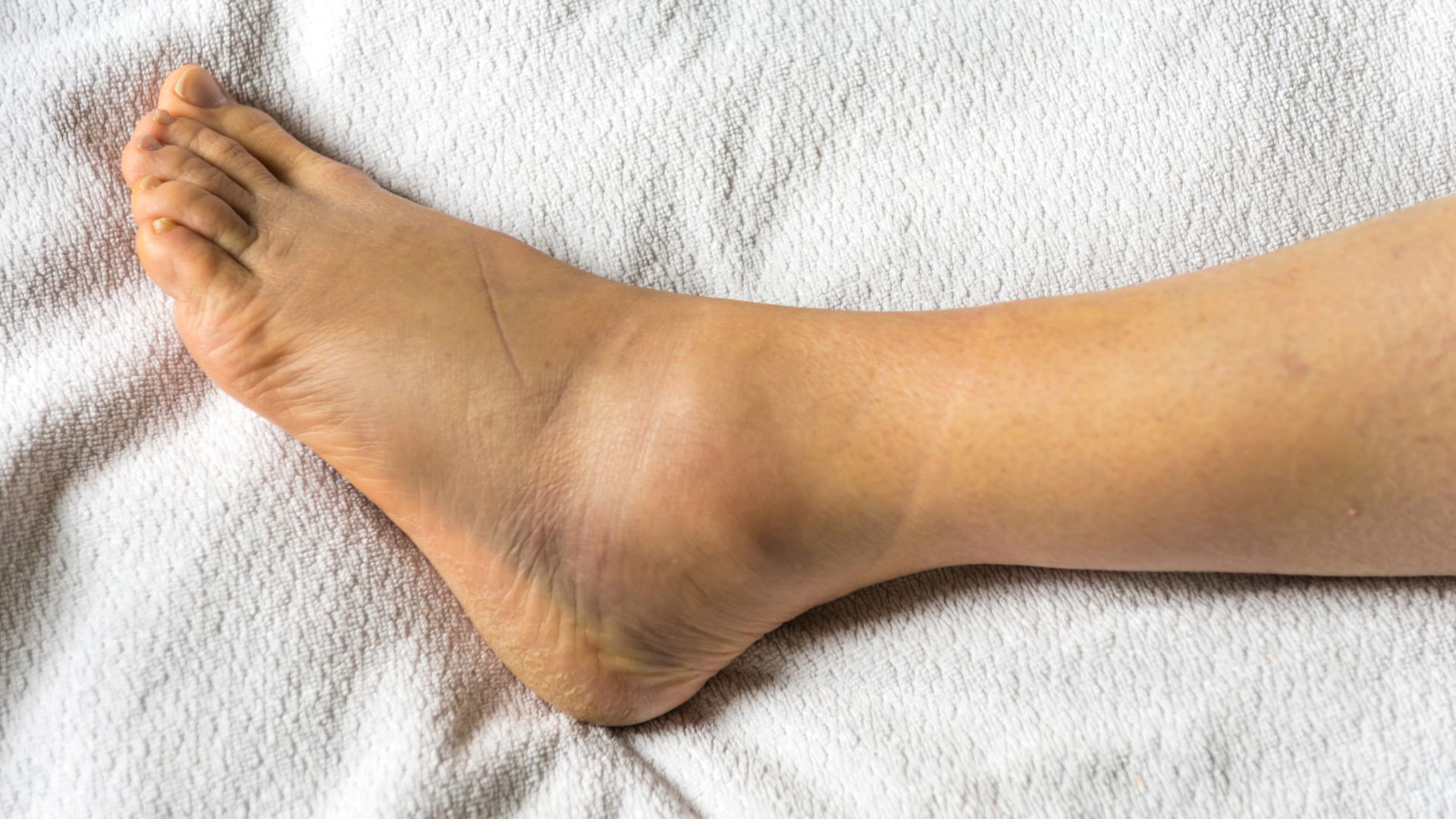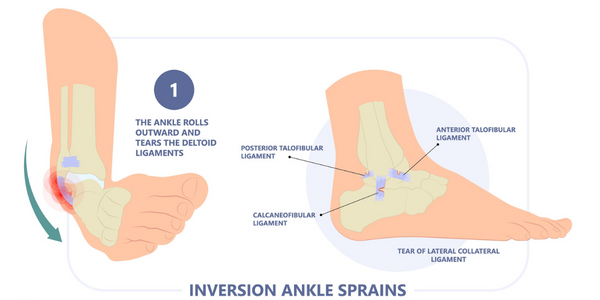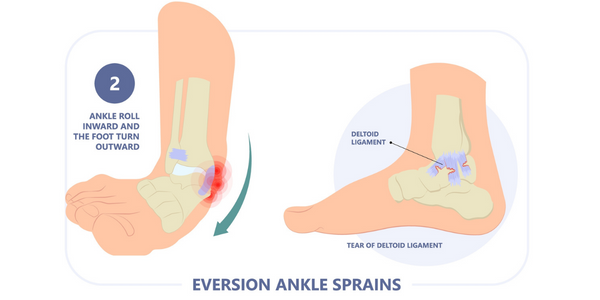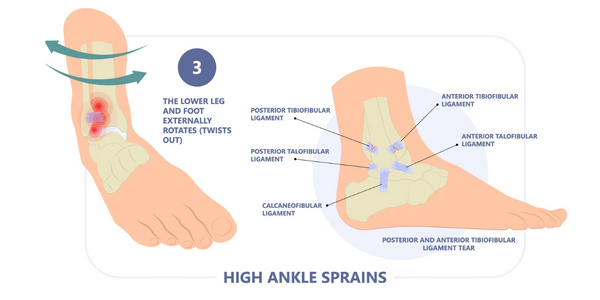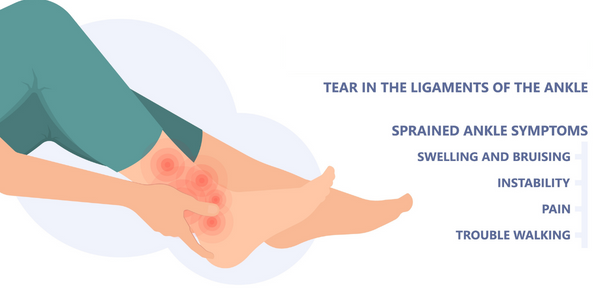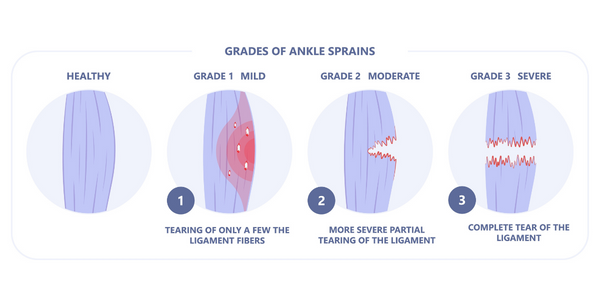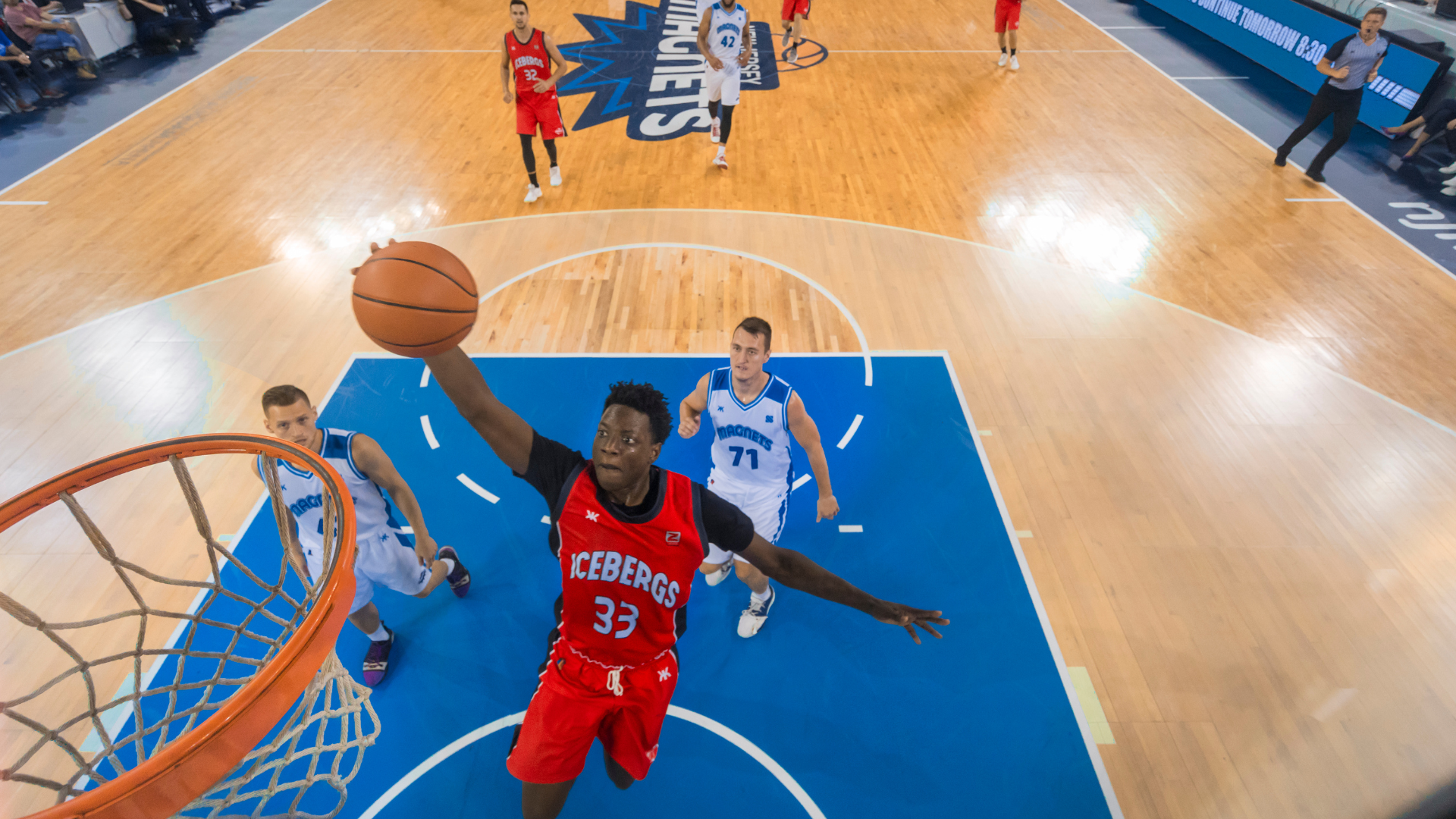Ankle sprains are one of the most common types of musculoskeletal injuries. Evidence suggests almost 80 percent of individuals will suffer an ankle sprain at some point in their lifetime.[i] The good news is ankle sprain physiotherapy is an effective treatment in most cases.
While many sprains often happen during sports, there are many that can occur with day-to-day activities as well. It can occur from stepping off a curb, slipping on ice or tripping over a rock while walking or running.
The ankle joint is important in providing stability and mobility during standing, walking, and running. Proper management of an ankle sprain is important to help ensure a quick recovery, reduce pain and avoid complications in the future.
In this article we will explore the types of ankle sprains, the signs, and symptoms, as well as physiotherapy treatment and prevention.
Table of Contents
- What is an ankle sprain?
- Types of ankle sprains
- Ankle sprain symptoms
- Classification of ankle sprains
- Ankle sprain physiotherapy treatment
- Ankle sprain prevention
What is An Ankle Sprain?
An ankle sprain is a type of ligament injury. Ligaments are soft tissue structures that help hold bones together and help provide the joint with stability (with the help of the muscles that surround the joint).
The outside of the ankle is comprised of three ligaments: the anterior talofibular ligament (ATFL), the calcaneofibular ligament (CFL) and posterior talofibular ligament (PTFL). The deltoid ligaments can be found on the inside of the ankle. These are much stronger than the lateral ligaments of the ankle, and therefore injured less frequently.
There is also a group of ligaments that help hold the bottom of the tibia and fibula bones together known as the syndesmosis ligaments. Ligaments are designed to be able to withstand the forces that are joints go through on a daily basis. However, when the force on the ligament is too strong for it to withstand, this is when it overstretches, and a sprain occurs.
There are two types of ankle sprains – inversion and eversion – and three classifications.
You may also enjoy reading: High Ankle Sprain Rehab
Types of Ankle Sprains
There are two main types of ankle sprains. An inversion sprain is when the ankle is twisted in such a way where you land on your small toe. It often leads to pain and swelling on the outside of the ankle.
An inversion sprain is the most common type of ligament sprain because the outer ligaments (or lateral ligaments) are weaker than the inner ones. A small roll of the ankle can cause the lateral ligaments to overstretch or tear, depending on the force that is being placed on the ankle.
In addition, the ankle naturally has a greater ability to move inwards than outwards, and therefore the risk of a lateral/inversion ankle sprain is higher than the second type of ankle sprain. This type of ankle sprain can affect one or more of the lateral ankle ligaments; however the ATFL ligament is the one that is most commonly injured in individuals.
The second and less common type of ankle sprain is a medial or eversion ankle sprain. In this case, the deltoid ligament (the ligaments on the inside of the ankle) is sprained.
The third type of ankle sprain is known as a high ankle sprain where the syndemosis ligament that holds the tibia and fibula together is injured. This injury most commonly occurs in athletes involved in high-impact sports such a football, soccer, and rugby.
Learn more about a physiotherapy approach to a high ankle sprain rehab here.
You may also enjoy reading: Does Ice Help with Inflammation
Ankle Sprain Symptoms
Symptoms vary depending on the degree of the injury. If you sprained an ankle, you may feel or notice:
- Pain, at rest and with weight-bearing activity (like walking)
- Swelling
- Bruising
- Tender to touch
- Instability in the ankle where it is difficult to stand on it[ii]
You may also enjoy reading: Common Shoulder Injuries
Classification of Ankle Sprains
Generally, ligament sprains are categorized into 3 categories or grades.[ii] The severity of the sprain depends on how much of the ligament is involved and the extent to which the ligament is torn. A sprain can range from tiny tears of the ligament to complete tears.
The grade of your ankle sprain will help guide your treatment plan.
Grade 1: This is when there is an over-stretching and microscopic tearing of the ligament fibers. There is usually mild tenderness, bruising and swelling around the ankle. Typically, there is no pain with weight bearing and no instability noticed with examination.
Grade 2: This is when there is partial tearing of the ligament(s). There may be pain with weightbearing and more tenderness, bruising and swelling around the ankle.
Grade 3: This is when there is a complete tear of the ligament(s). There is usually severe pain with weightbearing and significant tenderness, bruising, and swelling around the ankle.
You may also enjoy reading: Fracture Treatment for the Most Common Types of Fractures
Ankle Sprain Physiotherapy Treatment
Ankle sprain physiotherapy treatment often starts with a short period of immobilization and rest to reduce the swelling and avoiding further aggravation of the injury. In the early phases physiotherapy often includes range of motion exercises and isometric strengthening. During this early phase, your physiotherapist may also use modalities such as acupuncture, ice, and manual therapy to reduce the swelling and improve your range of motion.
As the range and strength starts to improve, balance retraining exercises are introduced. In the final phases of rehabilitation, strengthening and balance exercises are progressed to help you return to pre-injury activities.
Balance training is an important aspect of ankle rehabilitation as poor balance is often a risk for future ankle sprains and persistent ankle instability. Exercises are simpler in the beginning, such as single leg balance, and progress to exercises that require sharp turns or cutting movements that are needed for sports once you are pain-free.
The treatment program your physiotherapist provided will often range from 4 weeks for minor sprains and up to 12 weeks for a more severe sprain.[iii]
You may also enjoy reading: Elbow Pain Treatment
Ankle Sprain Prevention
The biggest risk factor for an ankle sprain is having a previous ankle sprain. The best way to prevent an ankle sprain is to ensure the ankle has good strength, balance, and range. Here are a few tips that may help to prevent sprains
- Be careful when walking or running on uneven surfaces
- Wearing appropriate footwear that will support you for the activity you are doing
- Performing exercises to improve your ankle stability
If you believe you have experienced an ankle sprain our staff of experienced clinicians can help design a customized treatment plan based on the degree of your ankle sprain and goals and provide education and recommendations on how to get you back to your daily activities.
If you have questions about how physiotherapy would be beneficial for you, please call or email Propel Physiotherapy to book a consultation or assessment.
References
[i] Gaddi D, Mosca A, Piatti M, Munegato D, Catalano M, Di Lorenzo G, Turati M, Zanchi N, Piscitelli D, Chui K, Zatti G and Bigoni M (2022) Acute Ankle Sprain Management: An Umbrella Review of Systematic Reviews. Front. Med. 9:868474. doi: 10.3389/fmed.2022.868474
[ii] Management of Ankle Sprains, Physiopedia
[iii] Ankle Sprains: High vs. Low, Orthopaedic Associates of St. Augustine
Written by

